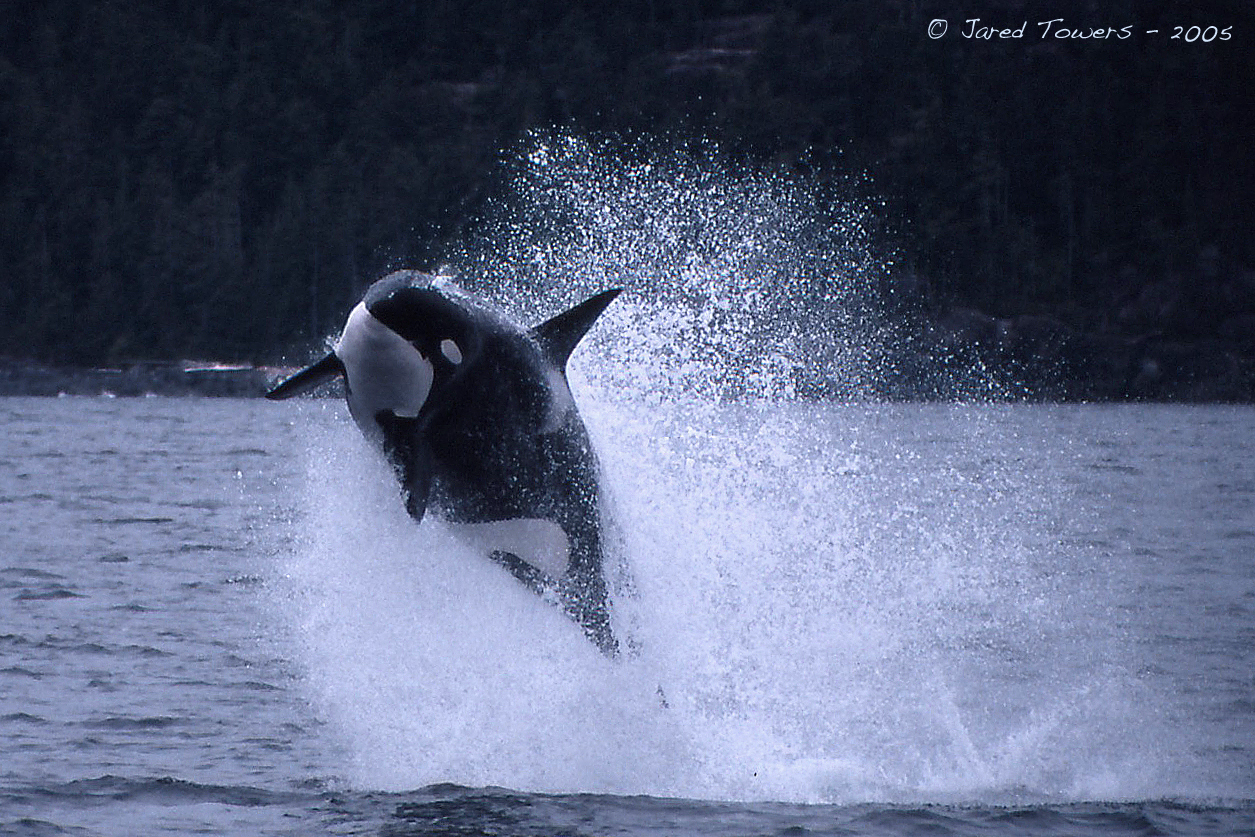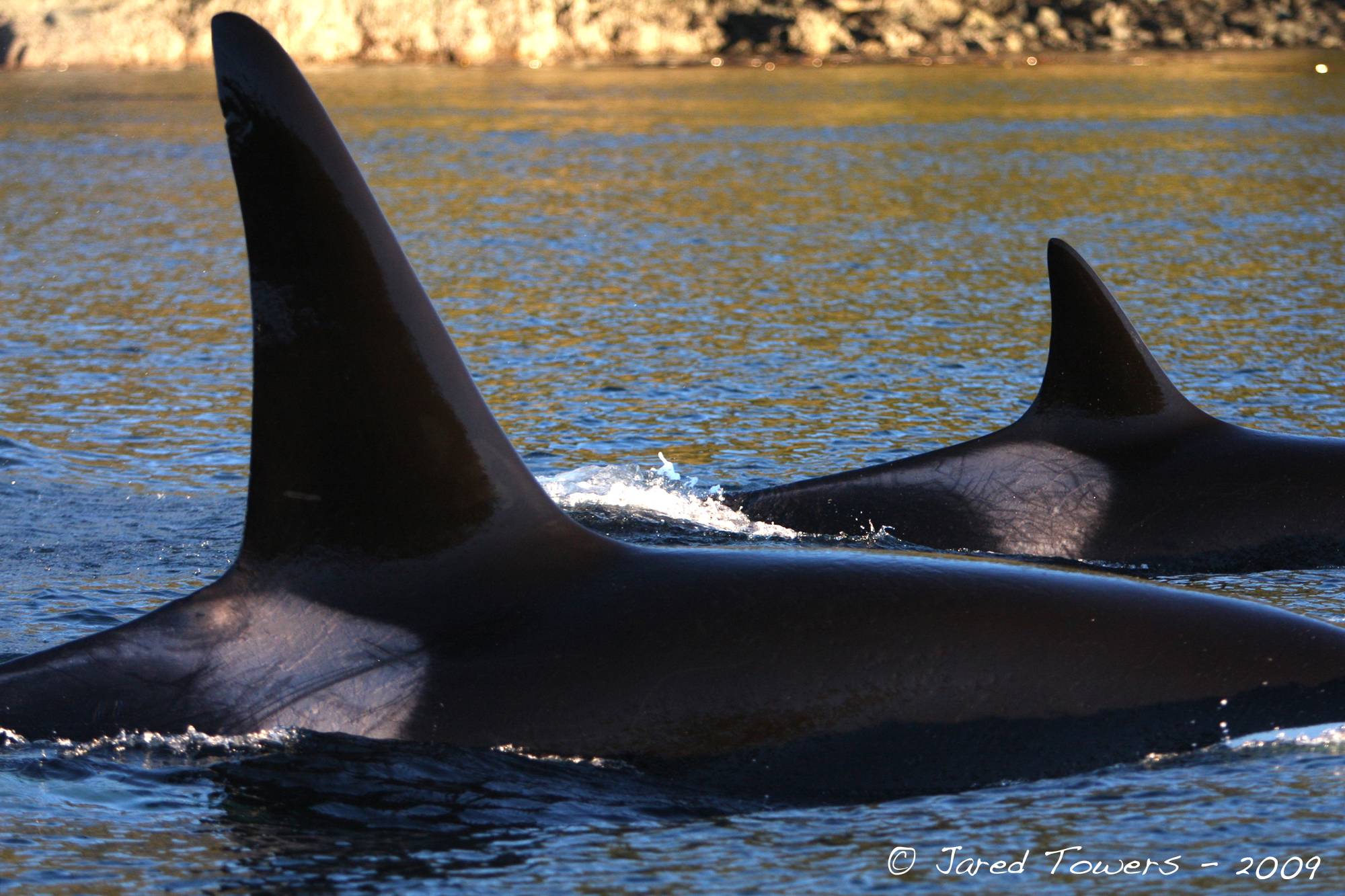Inukshuk is back. We saw him back for the first time this year in the feeding grounds near northeastern Vancouver Island on May 23, 2022. We know he migrated to the breeding grounds of Mexico because he was photographed there by CaboTrek on February 19th (known thanks to Happywhale).
Of all the male Humpbacks in our study area, he is the one where it has been the easiest to know HE is the one singing. Why? Because most other male Humpbacks in our study area sing at night when we can’t identify the singer in the dark. But Inukshuk, he often sings during the day. So, if you put in a hydrophone into the water to listen below the surface, you can then identify it is him making the amazing repertoire of sounds. [See below for samples of him singing.]
Why is he different in this regard? We think it is because he more often feeds on krill at night where the other Humpbacks, specifically in our study area around NE Vancouver Island, often feed on juvenile herring during the day.

To put to pieces together between feeding and when a male Humpback might sing.
- – If you are Humpback who likes to snack on krill, it’s often the case that you will be feeding at night because that’s when the krill is often closer to the surface (unless there are big upwellings of current during the day). Birds are active during the day and krill moves deeper to avoid being eaten by them.
- – If you are a Humpback Whale feeding on herring, it often helps that the birds are also going after that prey. The herring goes into a dense mass to try to get away from the birds which makes for a big mouthful of herring for Humpbacks. Because birds roost at night, Humpbacks feeding on herring near the surface is more likely to happen during the day.
So, if Inukshuk is more often feeding on krill. He is likely to be feeding at night, and resting, socializing and singing during the day. For the Humpbacks feeding on herring near the surface, they are more likely to be feeding during the day and resting, socializing and singing at night.
Do we have anything other than his daytime singing to support our hypothesis? Why yes we do!
- 1) We have often documented Inukshuk pooing and it’s pink = krill diet. In fact, people have even mistaken the krill poo as blood. Humpbacks feeding on fish have silvery poo.
- 2) Where we rarely see other Humpbacks resting during the day, we have repeatedly found Inukshuk doing so. We’ve even had people report him to us as a whale that might be dead because he was just lying at the surface and, once, we even mistook him for a log in the tideline where he was resting.

Nickname:
We nicknamed Inukshuk for the black markings in the lower center part of his tail, which – to us – look like an inukshuk, the rock figures traditionally built in northern Canada by the Inuit as “helpers” in communication. His catalogue designation is BCZ0339.
More on Humpback Whale song:
Humpback males sing more in the breeding grounds and the songs are unique to each area. All males humpbacks in the same area sing the same song (not in unison), and if the song changes, all the singers will adopt the change together. The leading hypothesis is that they are establishing acoustic territory through song. While both male and females Humpbacks can vocalize at any time of the year and for many reasons, the males may feel a greater urge to practice fragments of song toward the fall in the Northern Hemisphere. This is when their energy budget shifts from being largely about feeding to include mating related behaviours.
Samples of Inukshuk singing:
More on whale poo:
Know that whales pooping at the surface is not only important to researchers (and whales). It’s important to all of us! As whales feed at depth and poop at the surface, they transport nutrients up the water column and help fertilize the phytoplankton. This process is literally termed the “whale pump”. Just like plants on land, phytoplankton need sunlight to photosynthesize so they need to be at the surface. Whale poop fertilizes them there so they pull more carbon out of the atmosphere, helping regulate our climate. They also produce the oxygen we breathe and food to fuel the marine food web. At least half of the oxygen we breathe comes from the ocean.





